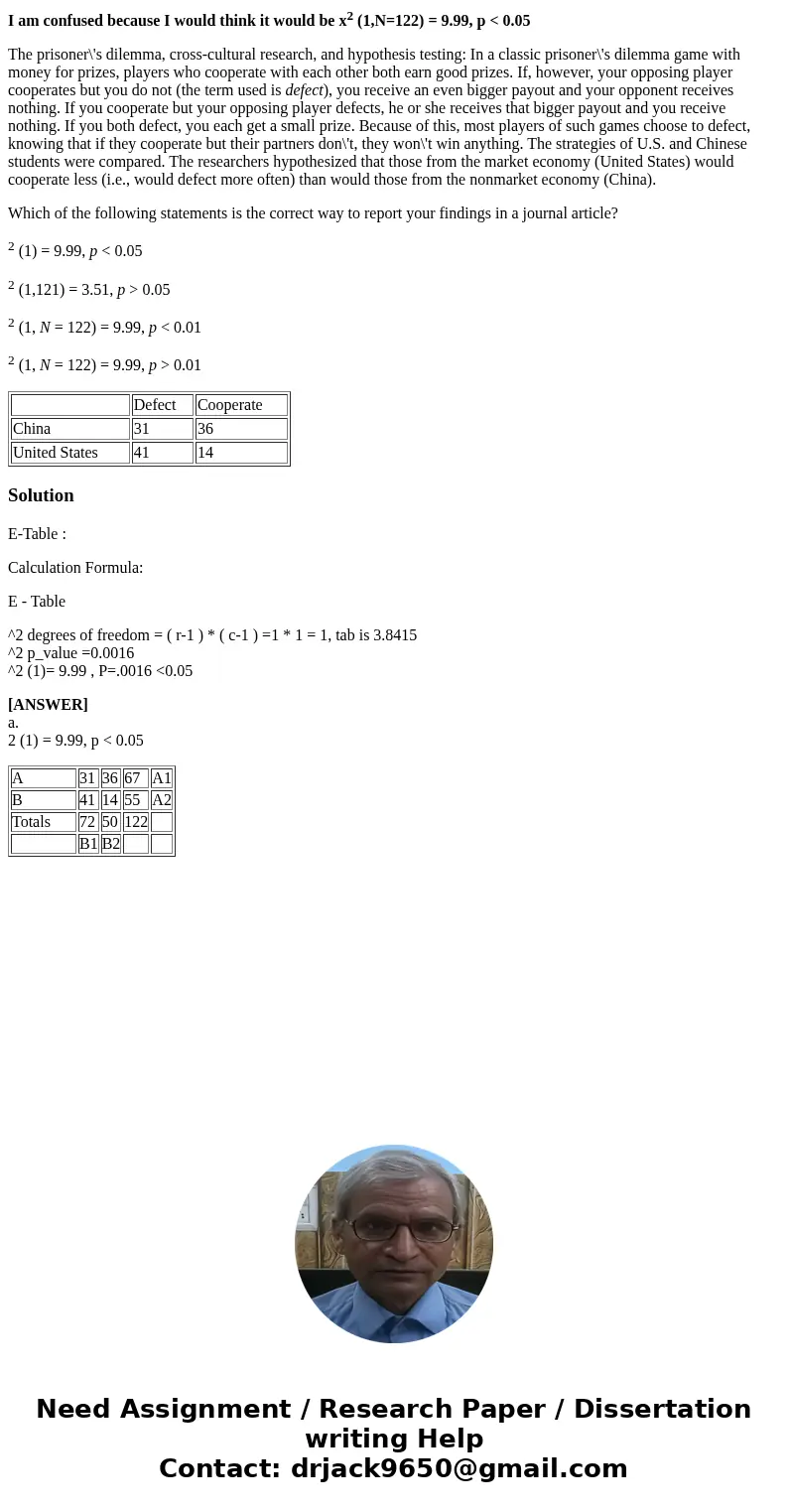I am confused because I would think it would be x2 1N122 99
I am confused because I would think it would be x2 (1,N=122) = 9.99, p < 0.05
The prisoner\'s dilemma, cross-cultural research, and hypothesis testing: In a classic prisoner\'s dilemma game with money for prizes, players who cooperate with each other both earn good prizes. If, however, your opposing player cooperates but you do not (the term used is defect), you receive an even bigger payout and your opponent receives nothing. If you cooperate but your opposing player defects, he or she receives that bigger payout and you receive nothing. If you both defect, you each get a small prize. Because of this, most players of such games choose to defect, knowing that if they cooperate but their partners don\'t, they won\'t win anything. The strategies of U.S. and Chinese students were compared. The researchers hypothesized that those from the market economy (United States) would cooperate less (i.e., would defect more often) than would those from the nonmarket economy (China).
Which of the following statements is the correct way to report your findings in a journal article?
2 (1) = 9.99, p < 0.05
2 (1,121) = 3.51, p > 0.05
2 (1, N = 122) = 9.99, p < 0.01
2 (1, N = 122) = 9.99, p > 0.01
| Defect | Cooperate | |
| China | 31 | 36 |
| United States | 41 | 14 |
Solution
E-Table :
Calculation Formula:
E - Table
^2 degrees of freedom = ( r-1 ) * ( c-1 ) =1 * 1 = 1, tab is 3.8415
^2 p_value =0.0016
^2 (1)= 9.99 , P=.0016 <0.05
[ANSWER]
a.
2 (1) = 9.99, p < 0.05
| A | 31 | 36 | 67 | A1 |
| B | 41 | 14 | 55 | A2 |
| Totals | 72 | 50 | 122 | |
| B1 | B2 |

 Homework Sourse
Homework Sourse